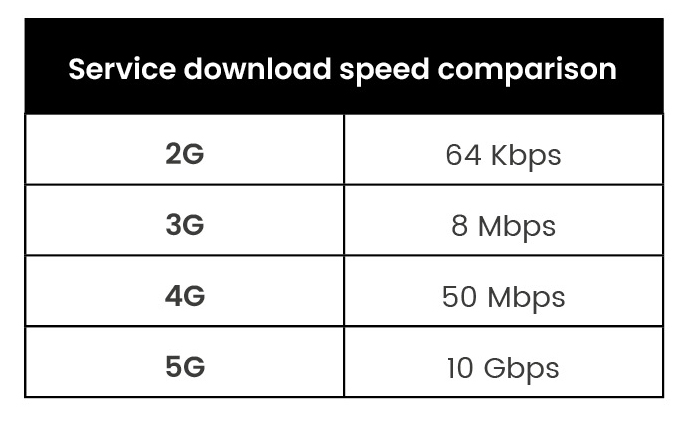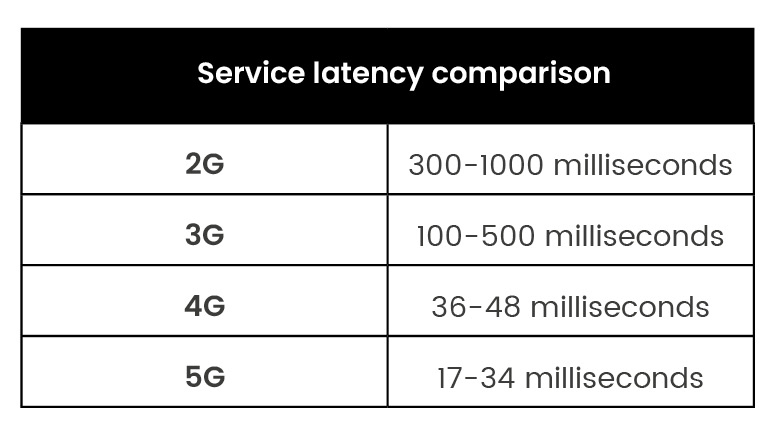The 5G maritime opportunity
An opinion piece on how 5G can transform superyacht connectivity in coastal waters…
Enhancing superyacht connectivity
Since cellular technology exploded in the 1980s it has become a significant link to many aspects of daily life. Resources for communication, information, education, business, banking, health and more are delivered by powerful cellularly connected devices.
This communication revolution has increasingly meant that it is difficult to function without access to a mobile device. Reliable and high-performance connectivity is no longer considered a luxury. In recent years, cellular connectivity has become an expectation, and now with 5G networks pervasive throughout urban areas the public demand for wider access to 5G networks has increased.
Upgrades to 5G services mean shore-based mobile network operators (MNOs) can now provide ultrafast download speeds and lower latency in comparison with previous generations of services (2G/3G/4G).

This low latency is significant when 5G is utilised for applications that demand faster response times such as navigation, monitoring and Internet of Things (IoT)-connected devices. This allows users of 5G networks close to real time monitoring and optimisation of a wealth of devices and services to further operational efficiencies and reduce costs.

To the day-to-day end user, 5G offers a more positive user experience with better access to high-quality video streaming and conferencing, and enhancing the all-round entertainment experience.
Applying this 5G expansion to modern superyachts is, unsurprisingly, a natural progression. Considering the convergence of luxury and engineering excellence, the anticipation is that communication and internet systems on board superyachts are also exceptional. That requires the integration of the faster connections offered by 5G networks into the latest standard build specification.
The integration of 5G capabilities represents a fundamental shift in superyacht connectivity, transforming these vessels from communication-challenged environments into seamlessly connected luxury platforms that rival the best land-based facilities. As technology continues to evolve, superyachts equipped with these advanced systems will set new standards for maritime connectivity.
However, whether anchored in remote bays or cruising international waters, vessels often find themselves at the extreme edge of cellular coverage areas.
5G challenges for on-board operations
For most yachts, operations are typically near the shore, navigating along coastal areas, at anchor or docked in a harbour. This proximity allows for a reliance on 4G and 5G land-based cellular networks, which offer better speeds and value for money compared to satellite-based solutions.
There remain some limitations, however. The superyacht is a challenging environment for 5G service coverage. The glass and visible structure of the yacht are far from ideal for cellular communications. The nature of steel hulls and the significant amount of metal in and around the boat means that radio signals rarely pass through and it is to be expected that those that do are likely to be severely attenuated. These difficulties are only compounded as you travel further into the yacht to areas such as tank decks and engine rooms where the physical barriers like bulkheads become more prevalent.
Alternatively, superyacht operators may consider a hybrid solution like a private 5G network solution with a satellite backhaul that allows for connectivity even when moving away from shore and into areas unserved by the standard land-based MNOs. However, distributing the signal is difficult. To overcome this, when requiring service from onshore, a bi-directional amplifier (BDA) is often used and connected to a pair of external antennas on the mast – this provides diversity and ensures that coverage from onshore MNOs is received in whatever position the superyacht is anchored. The BDA receives that signal on the vessel, then redistributes it through a passive antenna system or a fibre-fed wideband distributed antenna system (DAS). The choice of distribution method is vital to the efficiency and security of a premier maritime 5G solution.
“Safety improvements represent perhaps the most critical benefit of connectivity.
Emergency communications systems operate more reliably and crew can quickly access
emergency procedures and technical documentation when needed.”
5G advantages for on-board operations
A mobile device is precisely that – mobile. As such the 5G network is better designed to support these devices moving across a wider area as a single entity. This either cuts the need for handovers altogether or when using a shore-based MNO service it allows for smooth handovers to the next cell in the network. While often used to complement a 5G network, the limited range of Wi-Fi access points (WAPs) when solely used means that moving between the area of coverage leads to dropped calls and latency issues, whereas a well-designed 5G service will provide consistent coverage throughout the vessel.
5G services work well with IoT devices and support the use of multiple sensors and controls used around a yacht to monitor activity, alert to changes and automate certain functions. This saves time and means the crew is utilised more efficiently, with shore-based technical support readily accessible, enabling faster problem resolution and improved maintenance scheduling.
Low latency provides another key advantage of 5G for superyacht operations: critical services such as navigation support systems maintain consistent connectivity and emergency communications benefit from the near-instantaneous response times that 5G provides. These safety improvements represent perhaps the most critical benefit of connectivity. Emergency communications systems operate more reliably and crew can quickly access emergency procedures and technical documentation when needed.
5G speed for all
The speed and bandwidth capabilities of 5G networks can support multiple high-demand applications at once to accommodate both guests’ entertainment needs and crew comms without compromising performance. This is done through ‘network slicing’ and it allows yacht operators to prioritise critical communications over entertainment traffic, ensuring essential operations maintain priority even during peak usage periods. This intelligent traffic management ensures that safety systems and operational communications remain uninterrupted regardless of guest usage patterns.
Ready for future technologies
The possibility for integration with satellite systems creates hybrid connectivity solutions that combine the best of both terrestrial and satellite communications. This integration ensures seamless connectivity regardless of location, from coastal waters to the middle of the Pacific Ocean.
As an open-source platform we offer an industry-wide invitation to anyone and everyone in our sector to share their knowledge, experience and opinions. So if you have an interesting and valuable contribution to make, and would like to join our growing community of guest columnists, share your ideas with us at newsdesk@thesuperyachtgroup.com
NEW: Sign up for SuperyachtNewsweek!
Get the latest weekly news, in-depth reports, intelligence, and strategic insights, delivered directly from The Superyacht Group's editors and market analysts.
Stay at the forefront of the superyacht industry with SuperyachtNewsweek
Click here to become part of The Superyacht Group community, and join us in our mission to make this industry accessible to all, and prosperous for the long-term. We are offering access to the superyacht industry’s most comprehensive and longstanding archive of business-critical information, as well as a comprehensive, real-time superyacht fleet database, for just £10 per month, because we are One Industry with One Mission. Sign up here.
NEW: Sign up for
SuperyachtNewsweek!
Get the latest weekly news, in-depth reports, intelligence, and strategic insights, delivered directly from The Superyacht Group's editors and market analysts.
Stay at the forefront of the superyacht industry with SuperyachtNewsweek



